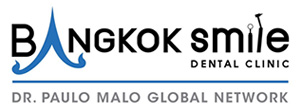
Dental Implants Protection & Proper Care
What causes implant failure after crown placement?
Implant complications after crown placement can involve both structural components surrounding tissues. Suggested causes include (A) medical conditions such as diabetes, smoking, etc), (B) reduced body resistance, (C) plaque accumulation and (D) stress from your bite. It usually presents as a redness/swelling of gums, continuous bone loss, as well as implant mobility/movement.
How do implants stress by my bite?
Implants lack the stress release provided by the ligaments that surround natural teeth. Loads applied to crown materials and bone around the implant is therefore potentially more damaging. Reversible problems include loosening or fracture of crown components. Irreversible complications can include bone loss, breakdown of the interface between implant and bone, or implant fracture. The problem is worse if you grind and clench your teeth (condition known as bruxism) as the loads applied to your implant and teeth can be up to 100% higher than during chewing.
What is bruxism and what causes it?
Bruxism is the unconscious gnashing, grinding or clenching (squeezing together) of teeth in non-chewing movements. It occurs in about 30% of people and 80% of bruxers are unaware of their habits. Bruxism usually takes place during sleep but can also occur when you are awake. Although the exact cause of bruxism is not know, current scientific studies suggest that it is regulated by physiological and psychological factors including altered brain Chemistry, genetics, coffee consumption, stress and anxiety.
How do I know if I suffer from bruxism?
You may be suffering from bruxism if you have (a) worn, sensitive, mobile or fractured teeth, (b) frequent fracture or dislodgement of fillings, (c) jaw, ear or headache and (d) jaw joint clicking or locking. The latter two groups of complaints are part of a cluster of neuromuscular and musculoskeletal conditions known as Temporomandibular Disorders (TMDs). Active bruxism can only be determined by the use of diagnostic mouthguards (splints) or a novel device known as the “BiteStrip” that can establish the frequency of bruxism.
Can I still have implants if I am a bruxer?
Yes, you can still have implants if you are a bruxer. Your dentist will modify the bite/design of your crown or select a more shock-absorbing and repairable crown material (e.g.ceramic composite system). By far, the most effective way of protecting your implant-crown is the use of dental mouthguards. Mouthguards are only worn at night and day-time bruxism is managed by habit and behaviour changes.
 |
 |
|
Patient with severe tooth wear due to bruxism |
The BiteStrip device for diagnosing active bruxism (courtesy of SLP) |
What kind of mouthguard should I get?
The type of mouthguards (splints) that you should get is largely dependent on the number/location of your implants and severity of your bruxism. Soft mouthguards are not as durable as hard splints made from acrylic and cannot be easily adjusted. Mini splints such as the MCI (MyoHealth Clenching Inhibitor) (Figures below) are particularly useful for bruxers with posterior implants. Dental splints are worn during sleep when bruxism forces are at their greatest.
 |
 |
|
The MyoHealth Clenching Inhibitor (MCI) |
The MCI inhibits the forces of clenching by up to 70% |
How do I take care of my implants?
Implants should be treated with care. They must be kept clean and plaque free twice a day using a small soft toothbrush and floss. Special attention should be given to all sides of the implant. Cleaning after meals is encouraged where practical. Other supplies may be recommended by your dentist and includes (a) anti-bacterial mouth rinses, (b) special floss with foam coating, (c) special interdental brushes and (d) plaque disclosing tablets. Careful maintenance of your implants will ensure that they will serve you well for years to come.
Do I need to get my implants checked by my dentist on a regular basis?
You will need to visit your dentist at least twice a year to have your implants, gum and jaws checked. Actual frequency of maintenance visits is largely dependent on your individual circumstance. The implants and crowns will be examined and cleaned with special instruments. X-rays are usually taken on an annual basis to assess bone health and implant stability. During such maintenance visits, daily care procedures are also reinforced.











